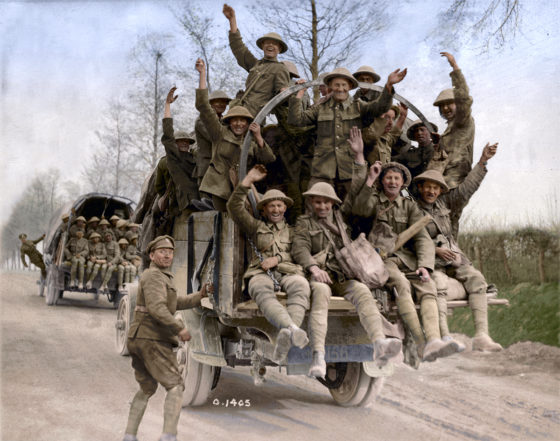Last week, I put out a call for photos and video of Living History events. You responded! Here’s some of what came in.
DELAWARE GOES TO WAR
On April 27, Cape Henlopen State Park in Delaware played host to 100 re-enactors who donned World War Two-era uniforms and took part in a mock skirmish between GIs and German infantry. A highlight of the event was the recreation of the surrender of the crew of U-858 — a German submarine operating off the American east coast in the final weeks of the war. The vessel came in under a white flag near Henlopen Park’s own historic Fort Miles a week after VE-Day in 1945. The pictures below were provided by Scott Wallen of FortMiles.org. They were taken by photographer Jason S. Colflesh. To see more of his work from the event, click here.





TORONTO IN FLAMES
Last weekend also marked the 200th anniversary of the Battle of York — the brief scuffle that followed the 1813 American amphibious assault on the capital of Upper Canada –York (now Toronto). To mark the occasion, historic Fort York played host to the public, re-enactors in period costumes and members of the present day Canadian Armed Forces. The city itself also organized a full out military parade, the likes of which Toronto hasn’t seen in decades. Oddly enough, all to commemorate what was actually a defeat for Canada! In opening hours of the American attack, British and local militia were swept from the shore of Lake Ontario by the invaders and quickly withdrew eastwards towards Kingston, leaving the city completely in enemy hands. The Americans set about looting parts of the town and even fired a number of buildings before withdrawing a few days later. The attack on York is often cited as one of the justifications for the 1814 British burning of Washington D.C. Stephen Otto of the Friends of Fort York provided the following pictures and captions of the weekend’s festivities. For more images, check out the organization’s photo page.


MEXICO BEATS FRANCE… AGAIN
Today will see reenactments take place throughout Mexico to commemorate that country’s May 5 victory over the French intervention force at the Battle of Puebla. The war, which was fought between 1861 and 1867,was fought over Mexico’s refusal to pay debts to its European creditors. France responded with the blessing Spain and Britain by dispatching a 60,000 occupation force to topple the government of Benito Juarez and recover the money owed. While Juarez was eventually chased from power, his forces defied the odds and dealt the French a crippling blow to the French at Puebla. Cinco De Mayo has since become a national day of celebration throughout Mexico and even the United States.

And If you have images of any historic events in your area, please send them to me at militaryhistorynow@gmail.com.









